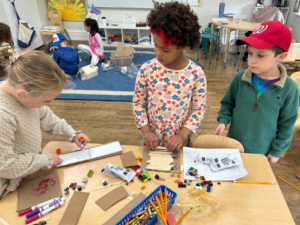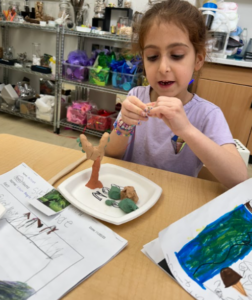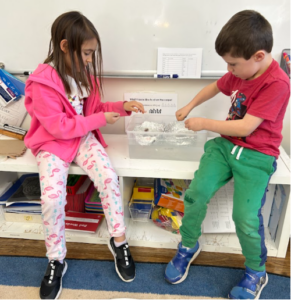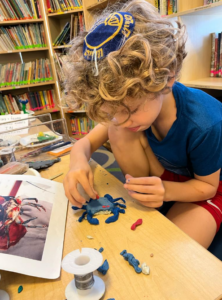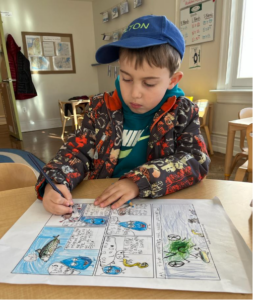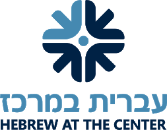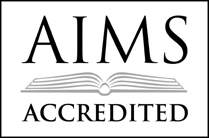The overarching theme in PreK is “Identity.” In the first semester the children considered the visible aspects of themselves as well as their “invisible” parts by answering the questions, “What do you look like?” “What do you do?” “What do you love?” They created self-portraits using a wide variety of materials including ink, collage, Plastilina clay, pencil, and paint to show what they looked like from the outside. They learned how to draw a full body self-portrait which they added to the canvas along with representations showing things they love at home, school, and outside by using a variety of materials from the art studio. Finally, they went to the fabric store and chose a ribbon to use as a frame on the edge of the canvas.
At the Chagigat HaLomedim, each child unveiled their self-portrait to the families and pointed to one part of it which held significant meaning. They also shared written and artistic work which demonstrated their great growth throughout the semester and which showed that the children understood that they are more than just what other people see.
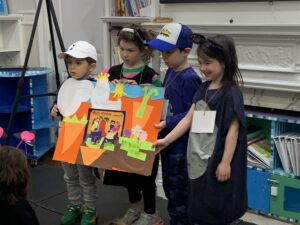 In January, each grade level in MILTON’s Early Elementary program on South Campus hosted a Chagigat Ha’Lomedim (Celebration of Learning) to share all that they’ve been working on together for the first semester of the year. We are so impressed by all that they’ve done.
In January, each grade level in MILTON’s Early Elementary program on South Campus hosted a Chagigat Ha’Lomedim (Celebration of Learning) to share all that they’ve been working on together for the first semester of the year. We are so impressed by all that they’ve done. 
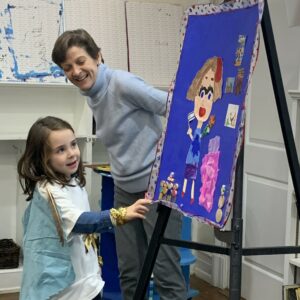
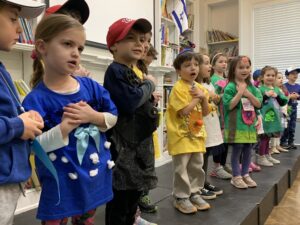
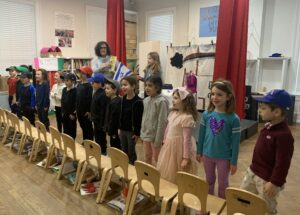 The overall theme of Kindergarten studies is “Community” and the first semester’s studies focuses on “Friendship.” Students compared and contrasted examples of friendship they found in literature, documented examples of friendship in their school community, and created original presentations about the important qualities of friendship and kindness.
The overall theme of Kindergarten studies is “Community” and the first semester’s studies focuses on “Friendship.” Students compared and contrasted examples of friendship they found in literature, documented examples of friendship in their school community, and created original presentations about the important qualities of friendship and kindness. 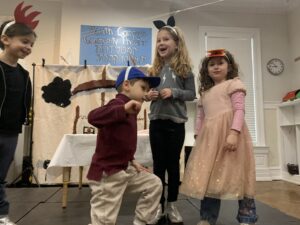
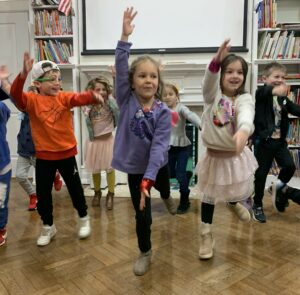
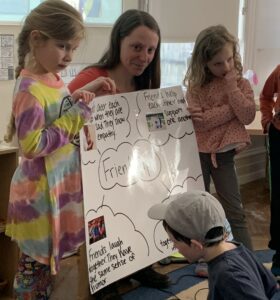
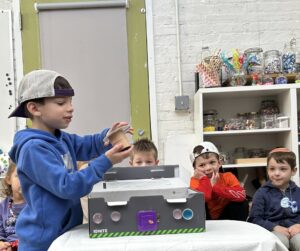
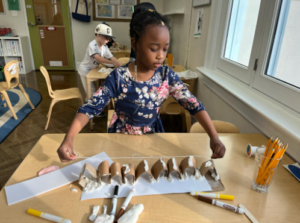 In first grade, students expand their horizons to consider the natural world. For the first half of this academic year, students focused upon the theme of “Water” and extended their exploration to encompass study of bridge construction, water art, and flora and fauna of major regional waterways.
In first grade, students expand their horizons to consider the natural world. For the first half of this academic year, students focused upon the theme of “Water” and extended their exploration to encompass study of bridge construction, water art, and flora and fauna of major regional waterways. 